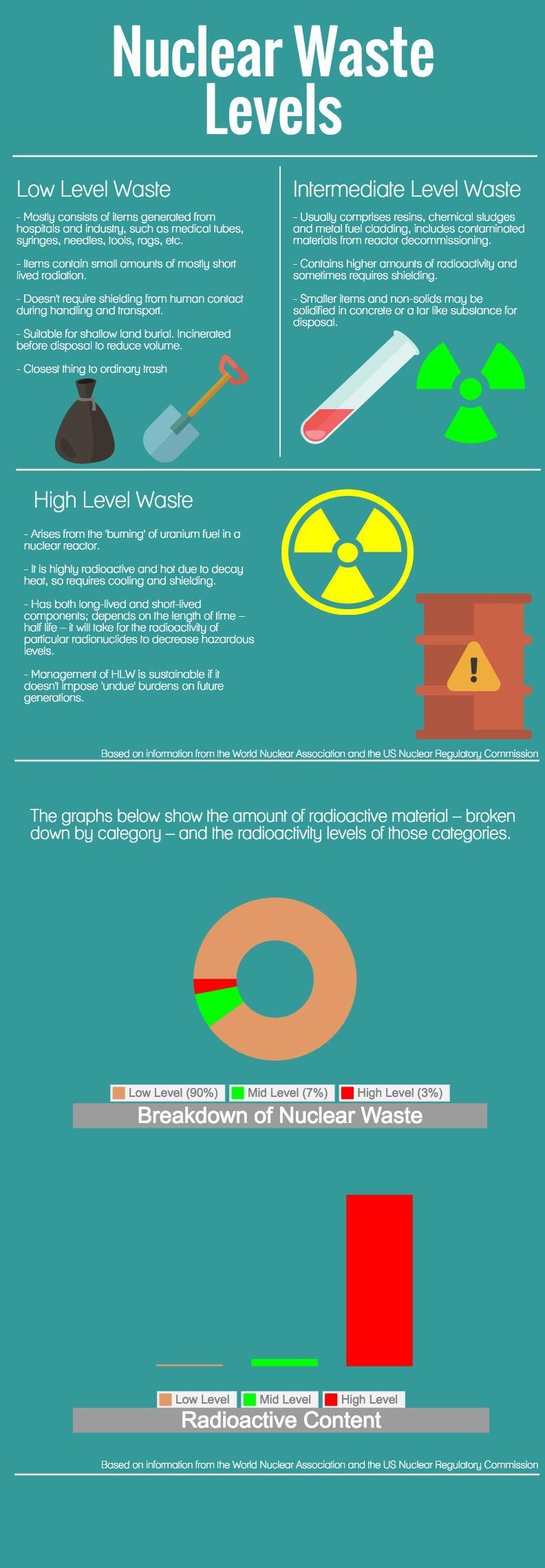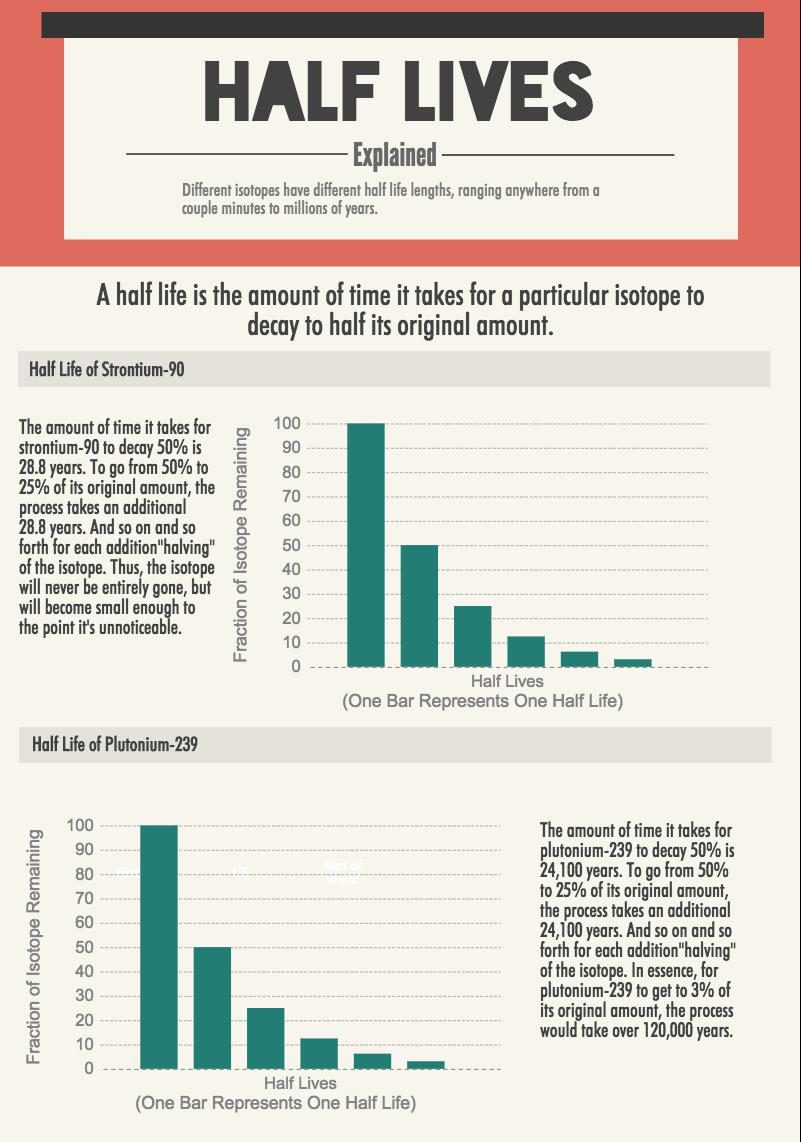According to the Smithsonian Institution, of the 20 biggest metropolitan areas in the U.S., 14 of them lie within 50 miles of a nuclear plant.
Last year, almost 20% of the United States’ electricity was generated by nuclear power plants, up from 8.5% in 2008. Nuclear power is a contentious topic for a number of reasons, but perhaps the most discussed element is the potential danger of superfluous, high level nuclear waste. The U.S. has produced close to 75,000 metrics tons of it in the last 40 years. Low level, intermediate level and high level waste are all radioactive, but high level waste poses by far the biggest threat to humans, as it consists of leftover reactor fuel. Exposure to high levels of radiation, like that of high level waste, can lead to birth defects, cancer and even death.


Last year, the U.S. nuclear energy industry accounted for almost one-third of the world’s nuclear power, leaving a lot of high level waste behind. So, where does that waste go? At the moment, all high level waste is actually stored on site at the individual reactors, as there’s no approved area in the U.S. for high level waste disposal.
In 2002, Congress approved a project at Yucca Mountain in Nevada which would have created a high level nuclear waste repository. However, the project has since fallen through as funding was cut in 2011. One of the reasons the Yucca Mountain repository is so controversial is because of the potential of human exposure to radiation.
Dr. Jess C. Gehin, who works at the Oak Ridge National Laboratory and is the current director of the Consortium for the Advanced Simulation of Light Water Reactors (CASL), explained the process of nuclear waste decay to this Eye reporter via a phone interview. “[Nuclear waste] is made up of a lot of different isotopes, so it’s highly radioactive in the short term and there are things with short half lives that decay away. Some of the actinides, like plutonium and iodine-129, have relatively long half lives.”
For example, strontium-90 and cesium-137, have half-lives of about 30 years, which is on the short end of the spectrum, whereas plutonium-239 and iodine-129 have half lives of 24,000 and 15.7 million years respectively.

“In 10,000 years the radioactive waste, of course, decays,” Dr. Gehin said, “so the hazard in 10,000 years is going to be much less than it is now, so I think it’ll be less of an issue.” While a lot of the radioactive material present in the nuclear waste will decay relatively quickly, there are also a number of isotopes that will remain for thousands or even millions of years, which is why the construction of the Yucca Mountain repository is so controversial – government officials are worried about the potential damage those long lasting isotopes may cause to human life.
Another reason some people are concerned about the construction repositories is because we could potentially lose track of them over time, leaving future generations with the potential to stumble upon highly hazardous materials. Imagine if we lost track of a nuclear site and thousands of years in the future, a new city was built on top of it. “While it is possible that we could lose all knowledge of [reactor sites],” said Dr. Gehin, “humans generally gain in knowledge, so I’m not sure it’s such a big challenge.”
While there are a number of reasons to be skeptical about nuclear power and the waste it creates, there are also several factors that suggest depositing nuclear waste at a repository like the one suggested at Yucca Mountain could be the best solution. For example, this would help prevent the potential nuclear contamination of several large metropolitan areas. Leaving thousands of metric tons of high level waste at the reactor sites puts densely populated areas near reactor sites at risk.
Yucca Mountain poses a potential solution for this, as high level waste would be transported from the reactors a more remote region of the U.S., where, if something did go wrong, it would pose less of a threat to the livelihood of the American people. Also, it would create a highly regulated area where a nuclear meltdown would be unlikely.
Obviously, there are strong arguments for both sides, but it remains to be seen what will be done with nuclear waste in the future.